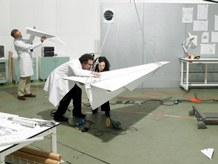Back pain is one of the most common reasons Americans go to the doctor, and one of the fastest growing treatments is spinal fusion surgeryBack pain is one of the most common reasons Americans go to the doctor, and one of the fastest growing treatments is spinal fusion surgery. From 2001 to 2011, the number of spinal fusions in U.S. hospitals increased 70 percent making them one of the most controversial surgeries. The increase in surgery is in part due to technological advancements, and aging population, but you can’t help but wonder if the best interest of the patient is always at hand.
In fact, orthopedic surgeons (those doing these spinal fusions) are the highest paid specialists coming in with an average salary of $421,000/annual. Compared to the average salaries of the care staff that support the patient’s post op: medical assistant- $45,000/annual, nurse- $50,000/annual, orthopedic administrative director- $110,000/annual. The vast income disparity between the positions comes first and foremost for the schooling, however, other physician’s salaries more often range in the $200,000-$300,000. Therefore that extra $120,000 is purely for the the increased volume of surgeries- often affiliated with “incentive pay”, and increased hardware “resale”. This can often lead to inflation of unnecessary surgeries– impacting the insurance companies, and the patients.
In fact, the Institute of Medicine has estimated that Americans spend $210 billion annually on unnecessary health care. It’s a key factor driving the increase in healthcare costs. It’s not just greed on the part of physicians and hospitals—often they’ve invested in very expensive equipment, like MRI machines, and want to use them to get a return on that investment.
A Rise in Preventative Care
Because of the increase in unnecessary medical interventions the U.S is trying to shift Medicare away from traditional method of payment. Therefore causing the system to trending away from FFS (fee for service) thus causing most hospitals to take a new approach on all levels of care. The impact of this trend is a more holistic approach to medicine, and hopefully, over time, higher quality of care in each hospital.
“Our goal is to have85% of all Medicare fee-for-service payments tied to qualityor value by 2016, and 90% by 2018. Perhaps even more important, our target is to have 30% of Medicare payments tied to quality or value through alternative payment models by the end of 2016, and 50% of payments by the end of 2018.”
US Secretary of Health – Sylvia Burwell
From Rewarding Volume, to Rewarding Value
Alignment between the private sector payers, employers, providers and consumers will help health care payments transition from a fee for service, to alternative payment models, which will be a critical step toward better care, smarter spending, and overall healthier people.
Some examples of preventative care are:
Physical Therapy before beginning surgical intervention.
Yearly checkups – fighting obesity, addictive behaviors (etc)
Preventative health measures- proper exercise and form, healthy foods, (etc)
Preventative Services- testing, vaccinations (etc).
Alternatives to surgery- neutral stem cell therapy, steroid injection
What this says for Hospital Staffing and Pay?
Physician challenges:
Claim denial: To avoid denied claims, practice owners find they need to immerse themselves in every minute detail to submit a “clean” claim.
Result:
Not accepting insurance/ Medicare/Medicaid patients. This will reduce the amount of claims by the doctor, therefore allowing the the physician to practice as they best see fitting. This could reduce in volume of practice.
This will benefit the doctor on some level, however, is nearly impossible for patients without an expendable income.
Staff Challenges:
Increased Education and Training: will be required in order to keep up with standards of quality operations. QUEST is one initiative to help aid in these efforts.
Keeping up with standards of quality while many hospitals are severely understaffed.
Result:
Nurses, and aids will now need to take additional time to educate themselves on best practice.
More administrative jobs will become available, as more positions will be required to insure education and standards are up to par.
Increased staffing will be necessary, this means more jobs for new graduates, and hopefully reduced stress on staff.
Administration will have incentive pay for quality care rates (lower infection rates, lower readmission rates).









